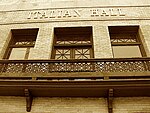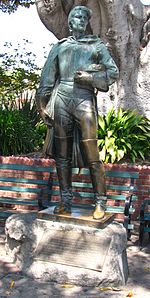Los Angeles Chinese massacre of 1871

The Los Angeles Chinese massacre of 1871 was a racial massacre targeting Chinese immigrants in Los Angeles, California, United States that occurred on October 24, 1871. Approximately 500 white and Hispanic Americans attacked, harassed, robbed, and murdered the ethnic Chinese residents of the old Chinatown neighborhood of the city of Los Angeles, California. The massacre took place on Calle de los Negros, also referred to as "Negro Alley". The mob gathered after hearing that a policeman and a rancher had been killed as a result of a conflict between rival tongs, the Nin Yung, and Hong Chow. As news of their death spread across the city, fueling rumors that the Chinese community "were killing whites wholesale", more men gathered around the boundaries of Negro Alley. A few 21st-century sources have described this as the largest mass lynching in American history.Nineteen Chinese immigrants were killed, fifteen of whom were later hanged by the mob in the course of the riot, but most of whom had already been shot to death before being hanged. At least one was mutilated, when a member of the mob cut off a finger to obtain the victim's diamond ring. Those killed represented over 10% of the small Chinese population of Los Angeles at the time, which numbered 172 prior to the massacre. Ten men of the mob were prosecuted and eight were convicted of manslaughter in these deaths. The convictions were overturned on appeal due to technicalities.
Excerpt from the Wikipedia article Los Angeles Chinese massacre of 1871 (License: CC BY-SA 3.0, Authors, Images).Los Angeles Chinese massacre of 1871
North Los Angeles Street, Los Angeles Downtown
Geographical coordinates (GPS) Address Nearby Places Show on map
Geographical coordinates (GPS)
| Latitude | Longitude |
|---|---|
| N 34.056583 ° | E -118.237806 ° |
Address
Antonio Aguilar
North Los Angeles Street
90012 Los Angeles, Downtown
California, United States
Open on Google Maps











